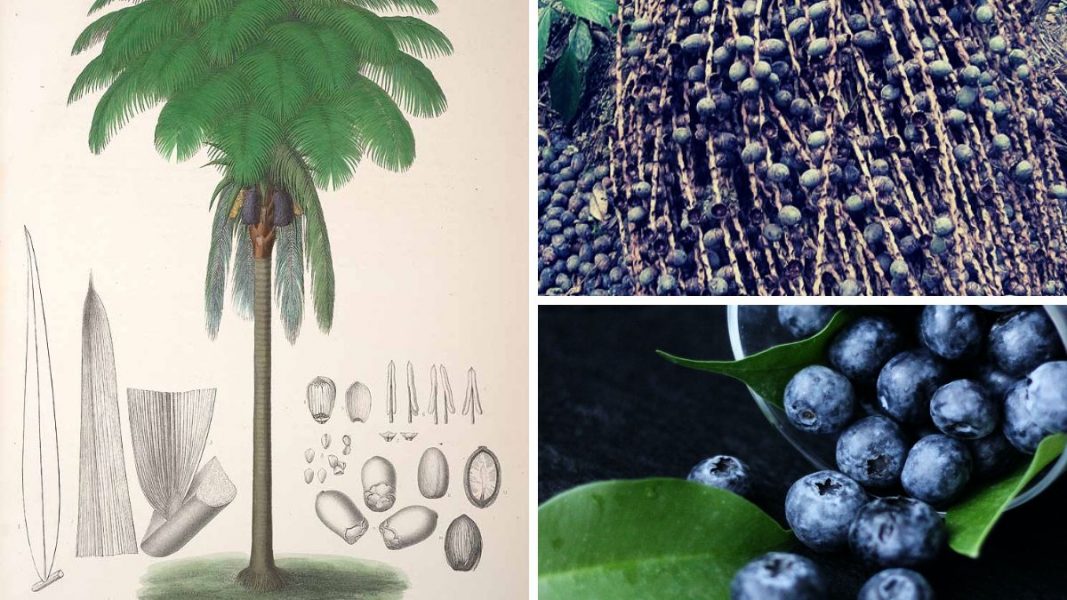
Ungurahui is a tropical palm tree considered a promising species in the Amazon because the pulp of the ripe fruit – which is sold in local markets – is rich in proteins, lipids and vitamins. It is consumed directly and used in the production of soft drinks, ice cream and sweets, with a pleasant chocolate flavor, having other agro-industrial potentialities.

Taxonomy
According to the Instituto de Investigaciones de la Amazonía Peruana (s.f.) (4), the Ungurahui palm(Oenocarpus bataua Mart.), belongs to the kingdom Plantea, class Liliopsida, order Arecales, family Arecaceae (Palmae), genus Oneocarpus, species Oenocarpus bataua Mart. and kingdom Plantea.
Etymology of the scientific name
Oenocarpus means “fruit of the wine”. Oeno is the Greek goddess of wine and carpus means fruit (Shanley, et. at, 2012) (8).
Common names of Oenocarpus bataua Mart.
Some common names of the Amazonian Ungurahui are: Hunguravi, Ungurahui (Peru); Milpesos, Seje, Patabá, Palma de leche (Colombia); Batauá, Patauá (Brazil); Palma de seje, Aricacua, Aricaguá (Venezuela); Chapil, Ungurahua (Ecuador); Majo (Bolivia); Koomeri (Guyana) (INDECOPI, 2019) (5).
Geographical location
The Ungurahui palm tree is a native species of tropical America -originating from the Amazon, northeastern South America and Panama- distributed in the Amazon basin of Bolivia, Brazil, Colombia, Ecuador, Peru, Venezuela and Guyana, both in non-flooded soils with good drainage and in flooded lands with poor drainage; it is characterized by its adaptability to poor soils (INDECOPI, 2019) (5).
Description of the seje palm
This single-stemmed palm reaches a height of 12 to 25 meters, with a diameter between 15 and 30 cm, easily recognized in the forest. It has a slow growth during the first years and it can take more than five years for the first fruits to appear. The reproductive cycle of the plant is biannual, which means that an adult palm tree will take an average of two years to bear mature fruit, with approximately four bunches, each with 500 to 4,000 fruits, weighing 2 to 32 kg, depending on agroecological conditions (Gonzales and Torres, 2011) (3).
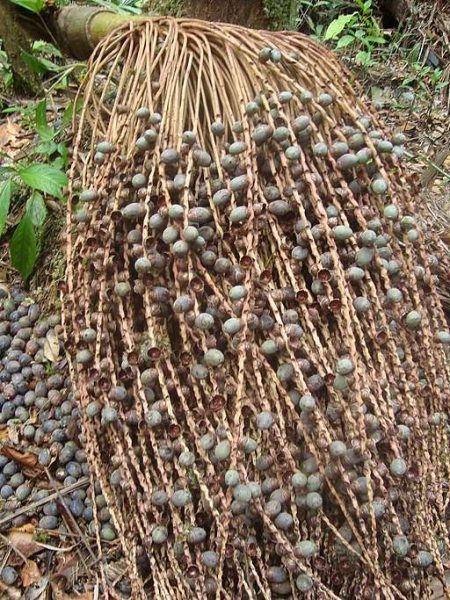
The fruit
The fruit of the Ungurahai or seje palm is an ovoid or ellipsoid drupe, 2.5 to 3.5 cm long and 2.0 to 2.5 cm in diameter, with a smooth epicarp (shell), dark red or purplish black when ripe. The mesocarp of the fruit is fleshy and whitish, the fraction containing the oil. The seed is covered by thin fibers with hard endocarp (Ocampo, et. at, 2013) (6). It is harvested throughout the year, occurring in some areas from October to March, with annual production per plant ranging from 30 to 36.8 kg (IIAP, cited by Benavides, 2012) (1).
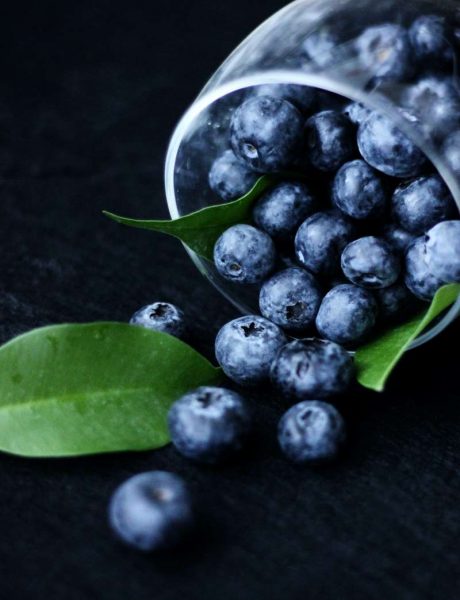
This fruit is known mainly for the nutritional quality of the oil, similar in composition to olive oil, given that its total content of saturated and unsaturated fatty acids are similar (Balick, cited by Ocampo), et. at, 2013) (6). Likewise, the juice of this Amazonian super fruit is compared to breast milk in its fat, protein and carbohydrate content, and its caloric value contains 55.3% of the calories of oils; 7.41% of proteins and 37.3% of carbohydrates (Collazos and Mejía, cited by Ocampo, et. at, 2013) (6).
Various uses of plant parts
Traditionally, the Amazonian indigenous people have collected the fruits of Ungurahui for their own consumption and to extract the oil used for frying and to treat respiratory diseases. Additionally, according to Shanley, et. at (2012) (8), Ungurahui seeds are used to make jewelry such as necklaces and bracelets. The fruit of this palm is edible and can be used to produce juices and oil for culinary, medicinal and cosmetic purposes.
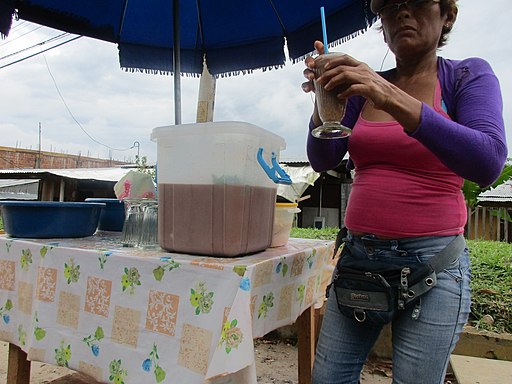
Palm hearts are consumed raw or served in salads. The leaves are used in the manufacture of roofs for houses, and the fibers are used in the production of ropes and braids, among others. The stems are used to make arrowheads and darts and the trunks can be useful for making garden fences, and the natives also leave them to rot and become breeding grounds for teredos (edible larvae).
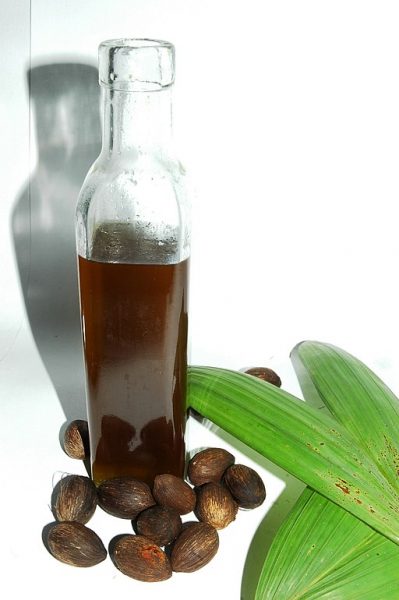
Benefits of Ungurahui for health and beauty
The main value of Ungurahui is the edible oil contained in the pulp, which is used in cooking, as fuel for lighting and to cure diseases. This fruit contains significant levels of antioxidants and total phenolic compounds, including procyanidins, anthocyanins and other polyphenols such as stilbenes, phenolic acids and condensed tannins, which help protect the cardiovascular system and counteract inflammation (Quispe, et. at, 2022) (7). The antioxidant compounds present in this fruit have the capacity to inhibit the oxidation processes generated by free radicals in the organism, preventing diseases such as cancer, cataracts and cardiovascular diseases.
Additionally, its omega 9 acid content acts as a hair revitalizer, giving it shine and preventing hair loss, and is also effective in skin care and tissue repair, being able to be used in the cosmetic industry (soaps, moisturizers and others) (Diario La Región, January 22, 2020) (2).
Ungurahui A sustainable crop
Non-timber forest resources, among them the Ungurahui palmhave been considered by the entrepreneurs of conservation initiatives in the Amazon basin, given that it has been used by the natives ancestrally and also constitutes an opportunity to develop strategies that generate sustainable economic benefits to local populations without compromising the functioning of the ecosystem, since its potential is very promising with a product of high nutritional quality, especially seje oil (Diario La Región, January 22, 2020) (2).
In addition, a large number of animals in the Amazon rainforest feed on the Ungurahui or Patauá (among them, deer, tapirs, monkeys, peccaries, macaws, curassows), consuming the fruit but not the seed, which they scatter in the forest where it can germinate (Shanley, et. at, 2012) (8).
References
- Benavides, G. 2012. Antioxidant activity, total polyphenols, anthocyanins, and lipid oxidation of Ungurahui (Oenocarpus bataua Mart) pulp. Thesis. Tingo María: Universidad Nacional Agraria de la Selva.
- The ungurahui, a valuable resource for food and health. (January 22, 2020). La Región newspaper. Retrieved from https://diariolaregion.com/web/el-ungurahui-recurso-valioso-para-la-alimentacion-y-salud/#
- Gonzáles, A. and Torres, G. 2011. Manual for the production of seedlings of Oenocarpus bataua C.Martius “Ungurahui”. Iquitos: IIAP. Retrieved from https://repositorio.iiap.gob.pe/bitstream/20.500.12921/95/2/gonzales_Libro_2011.pdf
- Peruvian Amazon Research Institute, IIAP. S.f. Ungurahui. Retrieved from http://www.iiap.org.pe/upload/publicacion/CDinvestigacion/iiap/iiap2/CapituloIII-46a.htm#TopOfPage.
- National Institute for the Defense of Competition and Protection of Intellectual Property, INDECOPI. 2019. Ungurahui. Biopat Perú, (2), 1-43. Recuperado de %C2%
- Ocampo Durán, A., Fernández Lavado, A., and Castro Lima, F. 2013. Seje palm oil Oenocarpus bataua Mart. for its nutritional quality can contribute to the conservation and sustainable use of gallery forests in the Colombian Orinoquia. Orinoquia, 17(2), 215-249. Retrieved from http://www.scielo.org.co/scielo.php?script=sci_arttext&pid=S0121-37092013000200009.
- Quispe Herrera, R., Belizario Ferrel, J.C., Quispe Solís, H., Paredes Valverde, Y., Cahuana Mamani, P., Valles Coral, M.A., and Caviedes Contreras, W. 2022. Antioxidant capacity of Ungurahui(Oenocarpus bataua) nectar. Clinical Nutrition and Hospital Dietetics, 42 (1), 80-86. Retrieved from https://revista.nutricion.org/index.php/ncdh/article/view/209#:~:text=Results3A20The20results20of20the%20la,ausencia%.
- Shanley, P., Cymeris, M., Serra, M. and Medina, G. 2012.. Fruit trees and useful plants in Amazonian life. Rome: FAO/CIFOR/PPI. Retrieved from https://www.fao.org/3/i2360s/i2360s.pdf.

Economist (Central University of Venezuela). Full professor and researcher attached to the “Edgar Abreu Olivo” Agrifood Research Center, Universidad de Los Andes. Doctor from the University of La Laguna (Spain). Award “One of the 10 most consulted authors of the Saber ULA university portal” (2005); prize in the III Essay Contest of the Central Bank of Venezuela BCvoz Economico, 2016, with the work “Theobroma cacao: transformation and consumption of the “food of the gods” in Venezuela and the world” (co-authored).
This post is also available in:
![]() Español (Spanish)
Español (Spanish)
